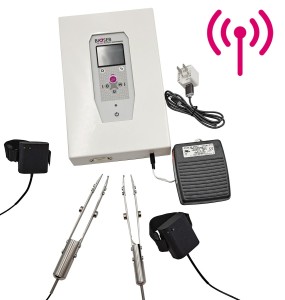Authors
G Gazzo, P Girard, N Kamoun, M Verleye, P Poisbeau
Lab
CNRS UPR-3212, Institut des Neurosciences Cellulaires et Int
Journal
European Journal of Pharmacology
Abstract
Inflammatory processes are critical promoting factors of chronic pain states, mostly by inducing peripheral and central sensitization of the nociceptive system. These processes are associated with a massive increase in glutamatergic transmission, sometimes facilitated by spinal disinhibition. In this study, we used etifoxine, a non-benzodiazepine anxiolytic known to amplify inhibition mediated by gamma-aminobutyric acid type A (GABAA) receptors in pain processing regions, either directly (through allosteric modulation) or indirectly (through the synthesis of endogenous neurosteroids). We used different models of local inflammation to evaluate the possible direct action of etifoxine on analgesia and edema. Pain symptom and edema measurements were performed after intraplantar carrageenan injection or after topical ear inflammation. We found that etifoxine treatment was associated with reduced plantar surface temperature 24_h after intraplantar carrageenan injection. In this model, etifoxine also alleviated thermal hot and mechanical hyperalgesia. A similar finding was observed while analyzing pain symptoms in the late phase of the formalin test. In a model of ear inflammation, etifoxine appeared to have a moderate anti-edemic effect after topical application. This slight action of etifoxine on the limitation of inflammatory processes could be mediated in part by cyclo-oxygenase 1 activity inhibition. Etifoxine appears as a promising therapeutic tool contributing to the limitation of inflammatory pain symptoms. Since etifoxine is already prescribed as an anxiolytic in several countries, it could be a good candidate for the prevention of inflammatory-driven edema and hyperalgesia, although the precise mechanism of action relative to its anti-inflammatory potential remains to be elucidated.
BIOSEB Instruments Used
Rodent pincher - analgesia meter (BIO-RP-M)
Source :
https://www.sciencedirect.com/science/article/pii/S0014299918307234

 Pain - Thermal Allodynia / Hyperalgesia
Pain - Thermal Allodynia / Hyperalgesia Pain - Spontaneous Pain - Postural Deficit
Pain - Spontaneous Pain - Postural Deficit Pain - Mechanical Allodynia / Hyperalgesia
Pain - Mechanical Allodynia / Hyperalgesia Learning/Memory - Attention - Addiction
Learning/Memory - Attention - Addiction Physiology & Respiratory Research
Physiology & Respiratory Research











![Dynamic Weight Bearing 2.0 – Postural Module [Add-on]](https://bioseb.com/733-home_default/dynamic-weight-bearing-20-add-on-postural-module.jpg)
























 Pain
Pain Central Nervous System (CNS)
Central Nervous System (CNS) Neurodegeneration
Neurodegeneration Sensory system
Sensory system Motor control
Motor control Mood Disorders
Mood Disorders Other disorders
Other disorders Muscular system
Muscular system Joints
Joints Metabolism
Metabolism Cross-disciplinary subjects
Cross-disciplinary subjects CONFERENCES & MEETINGS
CONFERENCES & MEETINGS 